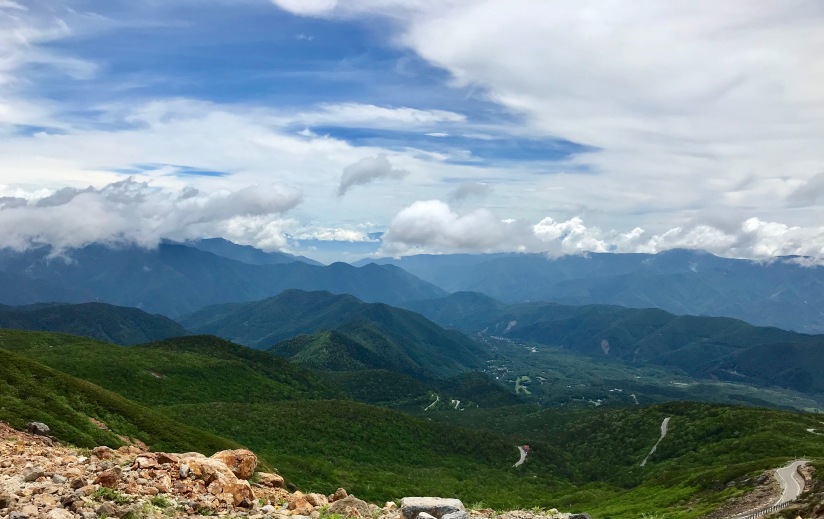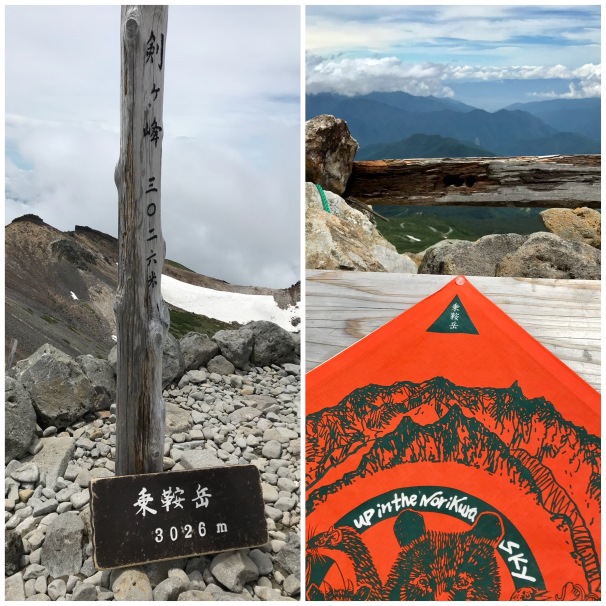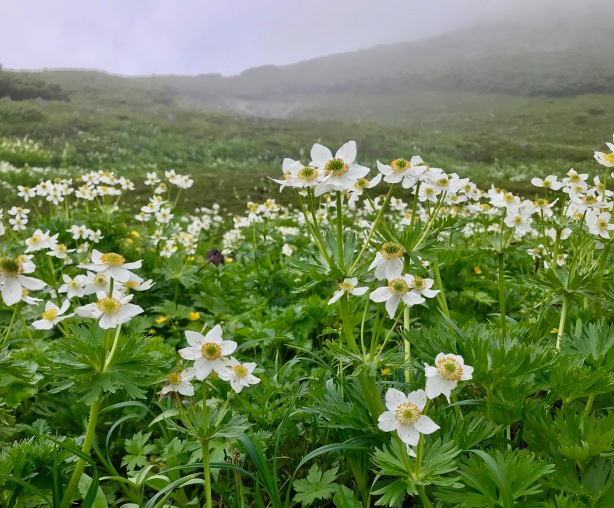Welcome to the last and final account of my adventures in the Japanese Alps. A few days in the country, I was already singing praises of the uniqueness of Japan and the many subtleties of the Japanese culture. During the two weeks I was there, I have had very close interactions with the Japanese and was bestowed with affection, care and kindness at every step of my journey. I cannot recall the last time I felt so welcome, special and loved — all at the same time. As someone once said, “In a world where you can be anything, be kind.”
This year, Japan recorded infernal temperatures. If I had known the outrageous summer temperatures that were in store for me at Yokohama and Kyoto, I would have probably stayed on at the national park. At Hiryau, the temperatures were slightly more reasonable. Owing to the sad state of my health, I decided to cheat and opted for a less strenuous mountain climb. Situated on the borders of Gifu and Nagano prefecture is another Level 1 active volcano, Mount Norikura.


Aren’t they abso-bloody-lutely stunning?
Thanks to the therapeutic properties of the much controversial Japanese public bath, my friend and I were able to freshen up for the next phase of hiking. The Japanese public bath, in short, is a place where people come together to discuss weather, politics and religion of the day – while being naked and immersed in an onsen(hot spring) which (make no mistake) is seriously hot! Thankfully, the wonderful ladies in my pool weren’t politically inclined and decided to tell me about the exquisite Japanese cuisines and where I should go looking for them. In case you’re covered in tattoos, you might be denied permission to enter a public bath. Who knows, you might have some form of deep intimacy with the Yakuza (underworld guys)!
Noticing a remarkable improvement in my health, I set off for Mount Norikura, the very next day.


From the bus stop at 2700 metres, it takes a little more than an hour to reach the summit of Mount Norikura. As mentioned in my earlier post on the Alps, the area is a geologically active region and the terrain for any volcanic mountain can be both challenging and daunting. As Spring gives way to Summer, the snow melts, new plants appear and pretty white daisies cover the peaceful little valley.


Mount Norikuradake is the southernmost and third tallest peak of the Northern Japanese Alps. Surrounded by caldera lakes, gushing waterfalls and alpine meadows on all sides, Norikura stands tall at a height of 3026 metres above sea level. Closer to the summit, the wind intensifies and the volcanic rocks assume a black, brown and orangish colour. During the climb, I came across a large number of Japanese hikers who had golden bells tied around their necks. Unable to solve the mystery of the golden bells, I continued my ascent until I came across a sign board which asked hikers to stay clear of wild bears and carry a bell! Lacking the skills to take on a fully grown wild bear, I was trying to decide whether I should turn back. Later, I decided to carry on with my ascent as I was already at the Asakusa view point and the summit of Mount Norikura was in sight.


The Norikura valley is particularly lovely in July because of the wild daisies that grow for miles under the shadow of the majestic mountain. The fleeting clouds bring scattered showers which in turn, keeps the air mild, crisp and pleasant. On a clear day, one can see the towering peaks of Mount Yari and Mount Hotaka – two of the most sacred mountains. Over a glass of Japanese tea and a bowl of handmade soba noodles, it is possible to have an amazing time at the Japanese Alps.



From mountain biking to skiing, rock-climbing and trekking, the area is known for its adventure sports and begins to gather a large number of visitors from August. Even though the national park is more expensive than other parts of Japan, I wish I had stayed on – amidst the placid lakes, gentle slopes and handsome smelling flowers.



Great post
LikeLiked by 2 people
Thank you so much 🙂
LikeLiked by 1 person
No problem 😁 thank you for following.
LikeLiked by 2 people
Wonderful Pics !
LikeLiked by 2 people
Thanks. I’m glad you like it. 🙂
LikeLiked by 2 people
Wonderful read!
LikeLiked by 2 people
Thank you 😊
LikeLiked by 1 person
Wow ! Wow!! Wow!!!😍 Leah.. amazing posts Dear.., incredible clicks.. 💛💛
LikeLiked by 2 people
Thank you for your kind words, Naman. You’re very encouraging !
Loved your post on the true super heroes of Kerala. Take care.
LikeLiked by 2 people
I Love your posts Leah..I love your spirit.. I truly do! I mean you share your beautiful journeys and experiences so beautifully.💛💛
Hahaha.. Thanks! I think that was just a way to convey my respect to those super awesome people..✨
Take care Dear.. ☺️
LikeLiked by 2 people
Thank you. Your appreciation keeps me going.
LikeLiked by 2 people
Welcome dear..😊
LikeLiked by 2 people
I am already in love with Japan ❤
LikeLiked by 2 people
Thanks. Glad I could make you feel that way 😊
LikeLiked by 2 people
Lovely!
LikeLiked by 2 people
I’m glad you liked it 😊
LikeLiked by 2 people
I sure did. I heard a lot about Japan. You brought them to life!!
LikeLiked by 2 people
Mother nature never fails to impress 😍😍
LikeLiked by 2 people
That’s very true. 😊
LikeLiked by 1 person
Brilliant.
LikeLiked by 2 people
Thank you. 🙏
LikeLiked by 1 person
Wow.. You really had a very active trip to Japan. Where to next? 🙂
Again a wonderful post.
LikeLiked by 2 people
Oh yes! I was on a hiking holiday and wanted to fit in as much as I could within 2 weeks.
You’ve asked a very difficult question. 😅
Iceland, Jaipur, Kashmir in Spring, Mount Annapurna base camp- these are high on my list. Hopefully I’ll get to visit them, all in good time.
LikeLiked by 1 person
Hello, I have nominated you for ” The Awesome Impact Award” , Congratulations!!
For more information please check my post
https://mytravelcsp.wordpress.com/2018/08/29/the-awesome-impact-award/
LikeLiked by 2 people
The landscapes look stunning!
LikeLiked by 1 person
Thank you. You should definitely find the time to visit the Japanese Alps. They’re very very beautiful and worth a visit!
LikeLike
Beautiful post and lovely pictures. “caldera lake” picture is breathtaking!
LikeLiked by 1 person
Ah thanks!
The volcanic lake is nestled among the rolling slopes and looks spectacular throughout the year. The Japanese Alps are lovely!
LikeLike
I can see it Leah. Amazing landscape all along! 😍
LikeLiked by 1 person
Beautiful ❤️ beautiful 🌺 beautiful
LikeLiked by 1 person
Thank you friend. 🌈
LikeLike
My pleasure always dear ❤️
LikeLiked by 1 person
Your pictures are beautiful. This part of the world looks so calm, neat and welcoming. Nature brings the deep connection with everything and everyone. No wonder people bathe together, naked in a pool.
LikeLiked by 1 person
Wow, that’s a beautiful way to look at it. I couldn’t agree more. It was a unique experience and I’m glad that I tried it. 🙂
LikeLike
Excellent post with plenty of info and some really nice photos!
Thanks for sharing
LikeLiked by 1 person
Thank you so much. Loving your blog! You’ve done some amazing treks and I’m so jealous. 😅
LikeLike
Thank you Leah. I am pleased to know you like the Olympus Mountaineering Blog!
I also see/read your worldwide travelling! Well done.
Next time you are in Greece, give a shout and I will provide you info for the best hiking and/or climbing activities in this country. 🙂
LikeLiked by 1 person
Great post and fantastic photos, especially the ones with flowers 😀😀😀
LikeLiked by 1 person
Thanks. Glad you liked it. Mountains are dear to me. 🙂
LikeLike
Wonderful photos!
LikeLiked by 1 person